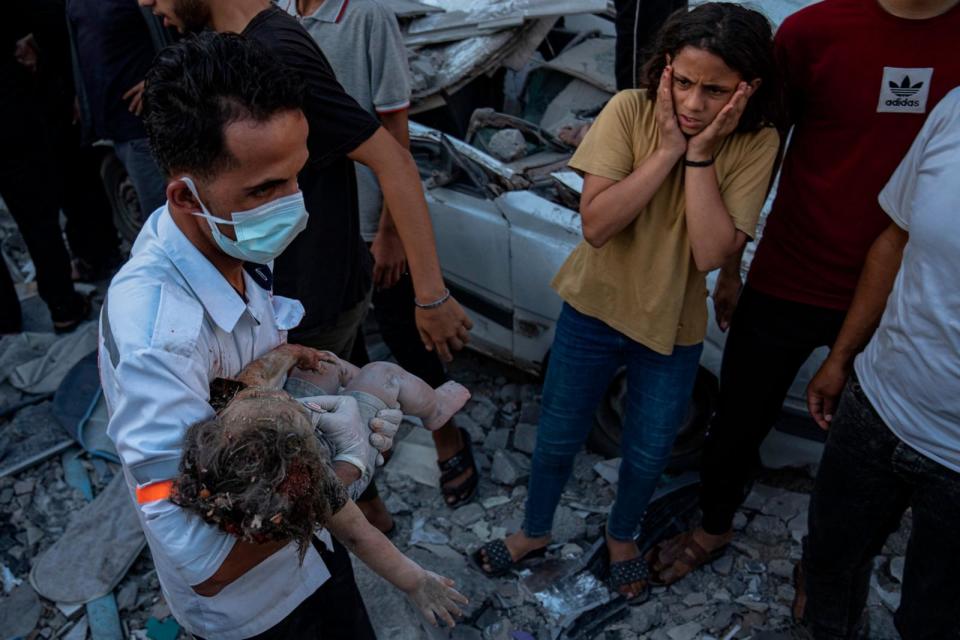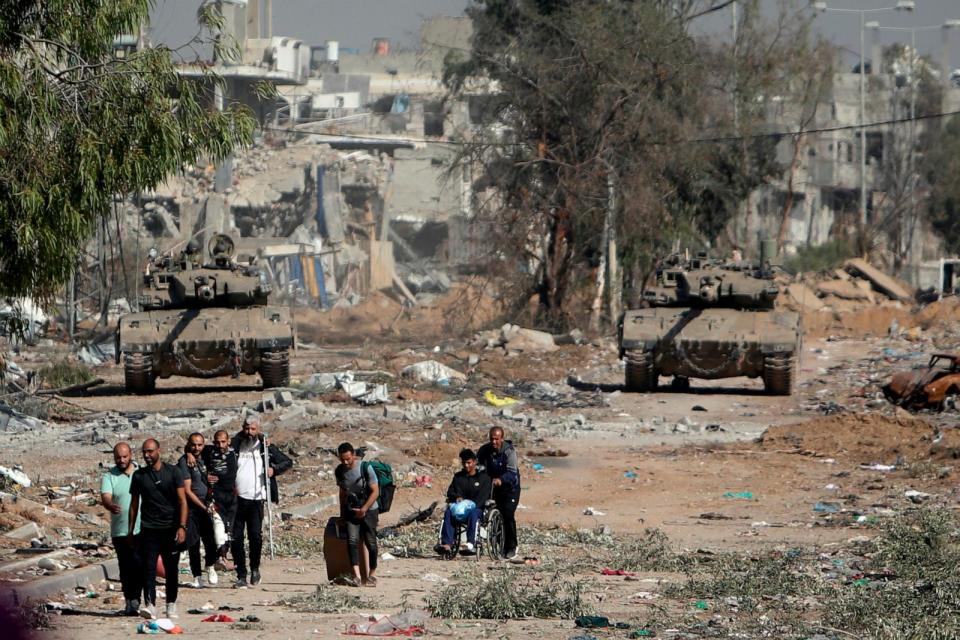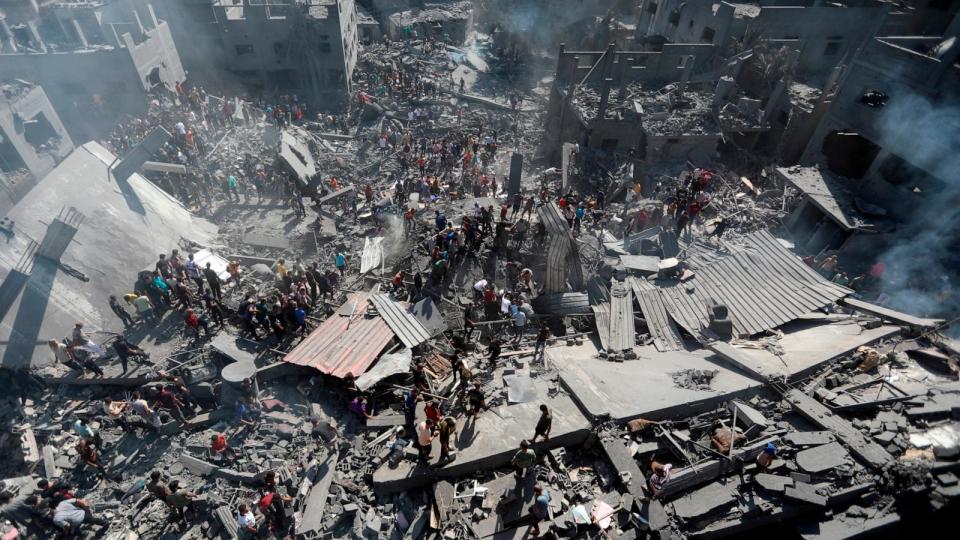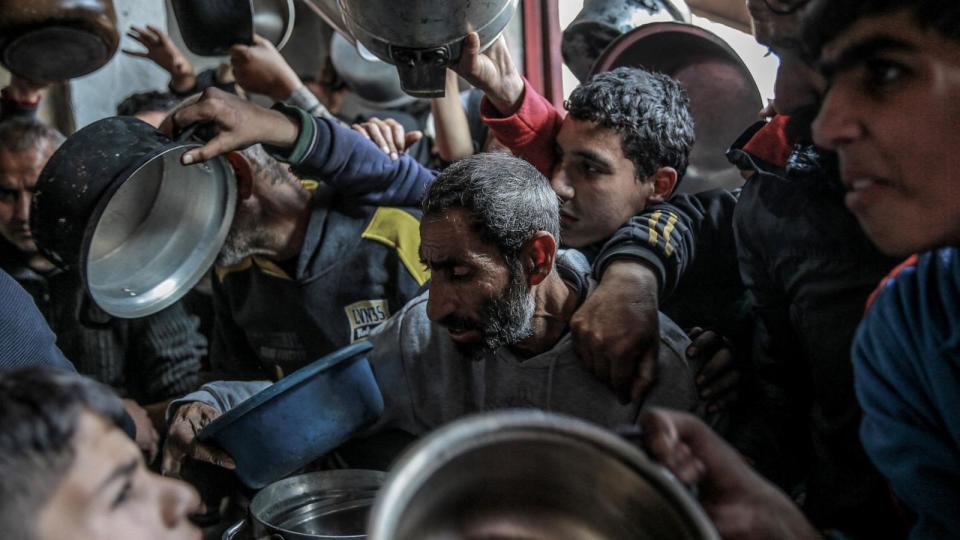Witnessing the Israel-Hamas war from afar, in contrast to up-close in Ukraine: Reporter's notebook
Even in this fast-paced digital age, when vast amounts of imagery and testimony cascade out of any war zone, nothing compares to seeing, hearing and sometimes even smelling the story firsthand.
In two years of war in Ukraine, I have smelled the stench of death left behind in towns after Russian troops retreated. I have seen the blood-stained sidewalks after Russian missile strikes. I have heard the grief-filled accounts of countless Ukrainians.
In six months of war in Gaza, western reporters have largely had to watch and hear the incomprehensible level of suffering from a distance.
On occasions, we have filmed and reported from the town of Sderot in southern Israel, a few miles away from Gaza's border fence.
Watching and hearing the regular explosions in the distance was surreal and disturbing. On a professional journalistic level, it also felt disheartening.

Despite this, and thanks to the brave and tireless efforts of our Gazan producer Samy Zyara and other Palestinian journalists, we have been able to report extensively on the brutal nature of the war in Gaza. Foremost in our minds is the shockingly high number of Palestinian journalists who have been killed to get those stories out.
As of Friday, 95 "journalists and media workers" were among the death toll counted in Gaza, according to the Committee to Protect Journalists.
MORE: Visual investigation shows WCK convoy cars in 3 locations in 1-mile span after being hit
The vivid nature of first-hand reporting is, to some degree at least, lost when a reporter is not there to see and hear things for themself.
That was not the case when it came to the foreign media's reporting of Hamas' terror attack on Oct. 7, which triggered the ongoing war in Gaza.
My colleagues who were in Israel within hours of that attack sensitively and vividly captured the shocking cruelty of what happened on that day.
Ever since, we have been able to hear and see Israelis' grief and anger.
Of course, we continue to innovate in the ways we film and conduct interviews via video-link from Gaza to ensure that the horror of this war still reaches our audiences.
The omnipresence of the smartphone, even in conflict zones, means there is always a way to get many vital visuals on a story out.
ABC News has a team of journalists dedicated to geolocating and checking videos to ensure we can verify every image we use in our reporting.
Certain communicators at humanitarian organizations have also proven to be innovative storytellers on the ground and an important visual source.

Some ABC News colleagues have been embedded with the Israel Defense Forces on short visits to specific areas of the Gaza Strip. Those colleagues have challenged the IDF about what they have been shown and about the major events of the day.
However, on any military embed, a reporter's movements are limited. I am not aware of any Western media IDF embed who has been able to independently document the suffering of civilians caught up in this war.
If western journalists were allowed into Gaza, then the risks of any assignment would be significant. However, major networks like ABC News have teams of people who are experienced at managing news gathering in high-risk environments (just consider the risks for my colleague Matt Rivers and his team during their recent coverage of the chaos in Haiti).
The merits and risks involved with any potential trip into war-torn Gaza would be carefully debated. A significant number of western reporters, myself included, would want to be on the ground, fact-checking events for themselves and seeing and hearing stories firsthand.

Throughout the entire six months of war, Israel has decided not to let western journalists independently enter the Strip. With very few exceptions, Egypt has also stopped foreign journalists crossing into Gaza via the Rafah crossing on the southern edge of the Strip.
Earlier this year, Israel's High Court rejected a petition from the Foreign Press Association calling for access into Gaza for Western journalists without IDF escorts.
The Israeli High Court cited security concerns. The Foreign Press Association, a nonprofit group representing journalists working in the region, called the ban on independent foreign media "unprecedented."

As a father of three young children, I would not take the prospect of a trip into a war zone like Gaza lightly. Nor would my bosses. No story is worth getting injured or killed, especially when stories can indeed be told from a distance.
However, the hardest thing about covering the war in Gaza is our inability to get close to the suffering of people on the ground.
Yes, we will keep working to tell people's stories in vivid ways from a distance. But not being able to witness the cruelty and chaos of this war firsthand does inevitably limit the impact of our reporting. And disseminating the reality of any war is why journalists go.
After UNICEF spokesman James Elder recently posted a video of his vivid account inside a wrecked hospital in Gaza, one social media user commented that Elder's powerful reporting on such a horrific situation was the reason the Israeli authorities do not want lots of international journalists on the ground.
The digital age of today can bring us closer to a story than ever before while we sit at a safe distance.
However, in the digital age, mistruths can also spread like wildfire. So when the fog of war is thick, the presence of impartial people trained in fact-checking and scrutiny (journalists) is arguably even more important.
Witnessing the horror of the war in Ukraine isn't easy.
Watching the horror in Gaza from just a short distance away is harder.
Witnessing the Israel-Hamas war from afar, in contrast to up-close in Ukraine: Reporter's notebook originally appeared on abcnews.go.com
